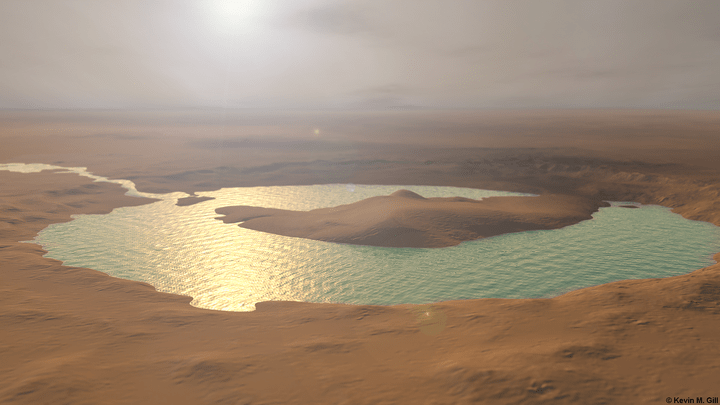Roughly 4.2 billion years ago, Mars was a much different place than it is today. It’s atmosphere was thicker and warmer and its surface much wetter. Unfortunately, the planet’s atmosphere was stripped away by solar wind over the next 500 million years, causing the surface to become so cold and dry that it makes Antarctica look balmy by comparison!
As a result, most of Mars’ water is currently locked away in its polar ice caps. But billions of years ago, water still flowed freely across the surface, forming ancient rivers and lakes. In fact, new research led by The University of Texas at Austin indicates that sometimes these lakes would fill so fast that they would overflow, causing massive floods that had a drastic impact on the surface.


